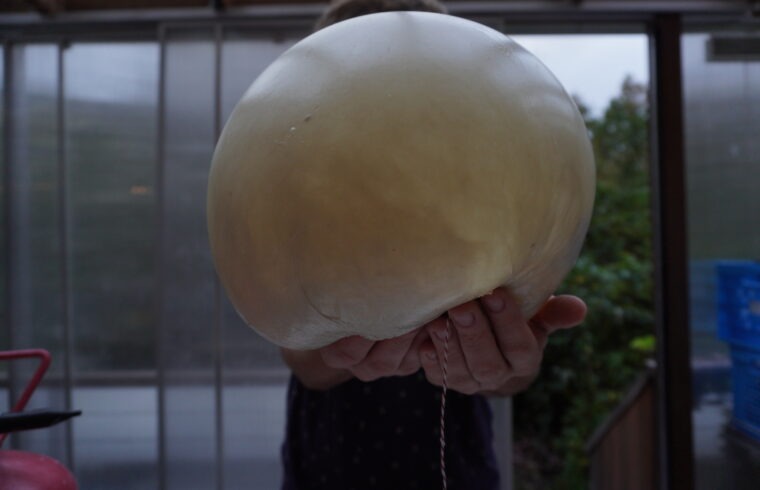Baking Lab Amsterdam enables team members to explore the fundamentals of baking. Here we studied the effects of salt, acids and kneading on the properties of gluten extracted from strong American wheat flour (14.5 % protein).The photos show different stages of membrane development and gas retention properties.
We demonstrated in these experiments that this gluten membrane is capable of not only retaining carbon dioxide (CO2) gas but also helium gas.
Gluten forms in the presence of water, allowing the wheat proteins glutenin and gliadin to create bonds. This process results in a unique membrane capable of retaining the carbon dioxide (CO2) gas produced during fermentation, causing the dough to rise.
The properties of the gluten membrane, such as strength, plasticity, extensibility and gas retention capacity, depend on various factors, including the specific properties of the proteins (as not all gluten is the same), kneading, oxidation, salts, acidity, and more.
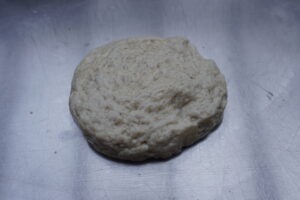
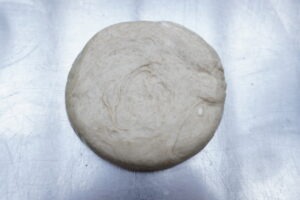
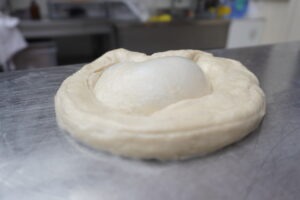
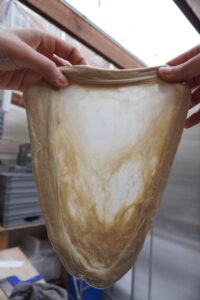
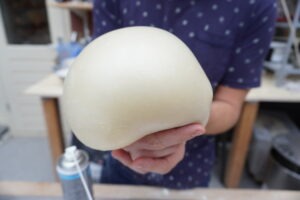
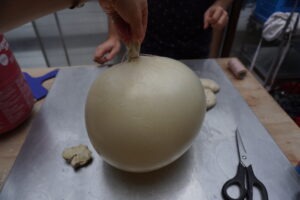
Video: gluten inflated with helium gas, will the balloon take off?
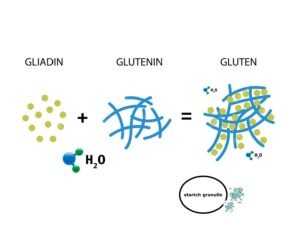
Figure
Gluten is formed in the presence of water by the bond of Gliadin and Glutenin, two protein complexes. Gliadin is the protein that causes celiac disease, intolerance to gluten. Gluten and starch form the so-called gluten starch matrix (membrane) in the dough. This membrane prevents the CO2 gas released during fermentation from escaping quickly, causing the dough to rise.
#gluten #helium #gas #bread #brood #desem #sourdough #understandingbaking #understadingbread #scienceofbread #scienceofcooking #amsterdam #workshops #kneading #kneden #proofing #rijzen #sciencecommunication #wetenschapscommunicatie #seitan #circulair #bakery #ambacht #fermentation #fermentatie #artisan

